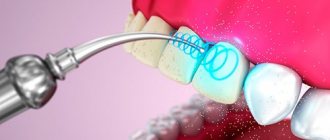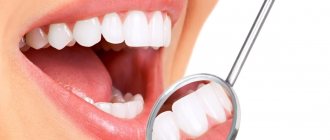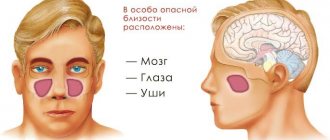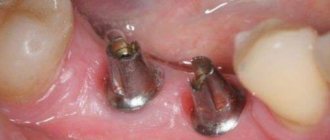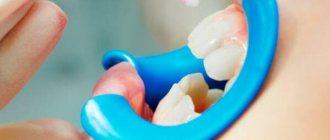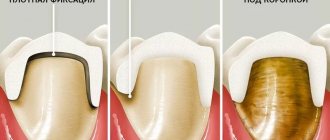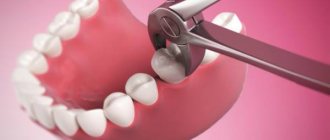Why do teeth hurt a lot after whitening: reasons
So, do teeth hurt after whitening? Indeed, such a symptom sometimes occurs, but it is not always associated with the dental procedure itself.
You should be especially wary of pain that does not go away for a long period after the manipulation. Such a deviation may indicate serious health problems, which are very problematic to eliminate on your own.
Often the reasons why teeth may hurt after a whitening procedure are untreated dental pathologies. First of all, this concerns:
- caries;
- diseases of tooth enamel;
- inflammatory processes in the gums or other soft tissues.
Another reason why teeth hurt after whitening is the presence of cracks or chips on the surface of the enamel. During the procedure, special gels based on hydrogen peroxide or other active ingredients are used. Penetrating into microcracks, these substances cause irritation, as a result of which the teeth can become very painful after manipulation.
Fillings that are not sealed or made from low-quality materials are also the cause of pain after whitening.
What is better to forget: bad habits
Conducting a session forces a person to get rid of some addictions. Smoking does not benefit the body at all, and bleached teeth will turn black very quickly if you do not stop the addiction to cigarettes. The ingredients of tobacco smoke accumulate in the micropores of the enamel, which is exposed due to the procedure and becomes too vulnerable.
The habit of modern people to consume large quantities of caffeine also has a detrimental effect on the whiteness of treated teeth. It is recommended to direct your efforts to combat such “addiction”, because the aggressive pigments of caffeine-containing drinks instantly penetrate into the dental surface and neutralize the effect that was obtained through the brightening manipulation.
So, the amazing whitening results can be maintained for a long period. It is necessary to adhere to simple hygiene rules, follow a diet and overcome bad habits. A snow-white smile makes the face attractive, so your efforts will be completely justified!
How long can toothache last after whitening?
How long can tooth pain persist after a whitening procedure? It is very difficult to give an unambiguous answer as to how long the pain will last, since such a deviation a priori should not exist. At least for people who have carefully prepared for the upcoming manipulation.
If we talk about how much teeth hurt after whitening, then the unpleasant symptom can persist for 7-10 days, and sometimes even longer. Longer toothache should be a reason to immediately consult a doctor!
Contraindications to the procedure
- Children's age, almost up to 18 years.
- Increased sensitivity. If this procedure is performed on teeth with this property, then not only the enamel can be damaged, but also the lower layer of the tooth covering, which is located under the enamel.
- Pregnant women and women who are breastfeeding should not undergo this procedure, because the chemicals contained in whitening gels will adversely affect the health of not only the child, but also the mother.
- Before whitening in a dental clinic, the doctor must do allergy tests for the components of the gel. If an allergic reaction is present, this procedure is contraindicated for this person.
- When there are defects and destruction of the enamel in large quantities, this procedure can cause even more harm, so this is also a contraindication. If you do this procedure with such damage, then the teeth after whitening will be in an even more terrible condition.
- If there are many filled teeth and crowns in the oral cavity, then you need to be prepared for the fact that after the procedure it will all be necessary to redo it all again. Since their new color will be strikingly different from the color of all these fillings and crowns. And since whitening itself is an expensive procedure, replacing all the fillings and crowns will hit your wallet hard, because it is also very expensive. Not everyone will do this.
- If there are teeth in the oral cavity that are damaged, and there are a number of them, then before doing this procedure, you must first cure everything. Only after all teeth are healthy can this procedure be carried out.
- When a person has diseases of the immune system, problems of the cardiovascular system and bronchial asthma, these are also contraindications to bleaching.
What whitening products can cause teeth pain?
Judging by reviews from patients who have undergone teeth whitening, pain often occurs after using Zoom. This is a gel that is fed through a special laser lamp. The effect of this procedure lasts for a year, but the risk of side effects is quite high.
Less “scary” are reviews of the use of Crest strips for teeth whitening. Unlike Zoom, they are easy to use at home. The gel requires strict adherence to the algorithm prescribed in the instructions, so the procedure with it must be carried out by a competent specialist.
How to carry out the procedure correctly
There are special teeth whitening kits designed for use at home. The main component of bleaching products is hydrogen peroxide. This substance cleanses the surface of teeth well from plaque, but under its influence the sensitivity of the dental nerves increases. It is best to use preparations in which the hydrogen peroxide content does not exceed 5–6%. This concentration is considered optimal. Manufacturers produce whitening products in different forms - in the form of toothpaste, strips that are glued to the teeth, trays with gel, chewing gum with whitening components, and special tooth varnish. Everyone can choose the most convenient option for themselves. Before choosing a product, you can consult your dentist.
Teeth whitening strips are an at-home teeth whitening system that come in the form of thin, elastic strips coated with a gel that contains hydrogen peroxide.
If the set includes trays that fit over the teeth, you need to make sure that they fit correctly and that the gel will not leak out of them. Otherwise, the gel will get on your gums and cause irritation.
Attention! During whitening, it is very important to follow the dosage of the drug. Don’t think that the more product you apply, the better the result will be. First of all, it is important to take care of your dental health, so you should not experiment and violate the instructions. If the bleaching gel gets on your mucous membranes, it may cause irritation, and if it is accidentally swallowed, it may cause vomiting.
It is necessary to keep the product on the teeth exactly as long as indicated in the instructions. Don't be tempted to keep it on longer to improve the effect. This can easily damage the enamel and provoke the development of caries. The time allotted for the procedure varies among drugs from different manufacturers. It mainly depends on the concentration of hydrogen peroxide in the composition of the product.
What to do if your teeth hurt a lot after whitening?
What should I do if my teeth hurt after whitening? If the pain is not very intense, then you can wait a little until it goes away on its own, or take a weak painkiller. Moreover, before the manipulation, doctors recommend drinking a painkiller that lasts for 8-12 hours.
If whitening was carried out at home, and after it your teeth hurt very much, then in order to soothe the pain and prevent its further occurrence, you must follow these recommendations:
- Re-take the painkiller, but only the one you took before the procedure.
- Avoid cold and hot drinks and foods for 48 hours. You should only eat food whose temperature corresponds to the normal human body temperature.
- Avoid eating acidic foods (this is especially true for people who naturally have sensitive teeth).
- If your teeth hurt after a whitening procedure, this is not a reason to abandon your usual hygiene procedures. But in order not to irritate them in the first days after the manipulation, you can clean them of plaque using a cotton swab and applying a small amount of toothpaste to it.
- To make teeth hurt less, doctors recommend using fluoride-based toothpastes. These substances block pain receptors, reducing discomfort. To achieve greater effect from using toothpastes, you must avoid eating and drinking any drinks for half an hour after treating your teeth. This is also necessary if they are very painful, since in 30 minutes the active substances will have time to penetrate deep into the enamel, which will lead to relief of discomfort.
What should you do if your teeth hurt after whitening, but you don’t want to take a painkiller pill? In this case, ordinary chewing gum without sugar will come to the rescue. It perfectly helps to soothe the pain - you just need to chew 1 pad for 10-15 minutes, and then take another. This should be done until all the packaging is gone. Practice shows that this method perfectly helps relieve toothache after the whitening procedure.
Causes
Almost all dental patients experience increased tooth sensitivity after the procedure.
To find out the reasons and understand whether it is dangerous, you need to understand a little about the structure of the chewing element.
The tooth consists of 4 main layers:
- enamels;
- pulp;
- dentin;
- cement.
When using any lightening agents, the main effect is on the enamel and dentin (since in many people the dentin is very close to the enamel coating).
The doctor uses a whitening gel, the elements of which penetrate into the enamel, reaching the dentin. We see approximately the same effect when we lighten our teeth at home. How do crowns change shade? This is influenced by:
- active oxygen released from products that contain peroxide or hydrogen peroxide;
- abrasive particles included in whitening gels and pastes for home use.
Eventually:
- the thickness of the enamel decreases;
- crowns receive microdamage due to exposure to abrasive agents, and vulnerable areas form on them;
- The sensitivity of the nerve endings inside the tooth increases.
As a result, the patient's teeth ache. Or they do not hurt when at rest, but after a sip of hot tea or cold air it becomes painful. The enamel structure is damaged, and the tooth is defenseless against the aggressive influence of the external environment.
Fortunately, this is a temporary phenomenon. It doesn’t take long for your teeth to ache – soon the enamel is restored.
Sometimes increased sensitivity is due to the fact that the nerve is close to the enamel. In this case, it is compressed by dentin tissues. After whitening procedures, the discomfort that tormented the patient intensifies. The nerve becomes inflamed. Then the dentist has only one option - to remove it. Such situations arise infrequently.
Teeth whitening is a procedure that will give your smile purely aesthetic beauty, but will not add health to your teeth. It is not recommended for people with hypersensitive tooth enamel. Although dentists can offer a more gentle technique.
Teeth whitening procedures can be performed in a clinic or at home. It should be noted that in the latter case, you may not achieve the desired result, but only damage the enamel.
It is rare that anyone can boast of a thick layer of healthy enamel coating. Most often it is thinned in places, has chips and microcracks. Therefore, any impact on it can disturb the deeper layer of dentin and the pulp located underneath it - a porous tissue penetrated by blood vessels, lymphatic ducts and nerve fibers.
Irritation of nerve endings leads to sharp pain. Especially when you eat chilled or, conversely, very heated food. The temperature, affecting the protective layers of the teeth, reaches the sensitive pulp, which reacts to it with acute painful attacks. In addition, when gingival tissues are exposed to abrasive particles from bleaching agents, they can receive microdamage and subsequently become inflamed. At the same time, excruciating pulling, aching pain is felt.
This is why you should choose a whitening method together with a qualified dentist who can take into account all the individual characteristics of your teeth. You should also not resort to professional cleaning more than twice a year. And before using advertised home remedies, you should definitely ask your doctor whether they are suitable for you personally and whether they will cause harm.
Is it possible to prevent pain?
To avoid an unpleasant symptom, you need to think in advance about what to do to prevent pain from making itself felt after teeth whitening. To do this you need:
- 1.5-2 weeks before the procedure, use pastes that reduce tooth sensitivity (Sensodyne, Parodontax, Forest Balm, etc.).
- Use only a soft toothbrush, the length of the bristles should be optimal in each individual case. If the brush does not scratch the enamel or cut the gums, then you can safely use it.
- Before and after bleaching, special desensitizing gels should be used. They will not only relieve pain, but will also restore the enamel if it is damaged.
- If the procedure is carried out using strips, then shortly before the process itself (about half an hour) you can put special trays treated with a desensitizing gel on your teeth. After the allotted time, the mouth guards should be removed, rinsed well, and the mouth should be rinsed with clean water. Only then can you apply a bleaching agent to the trays and put them back on.
Remember that whitening with gels is carried out once a year. If you prefer home remedies (strips), then you should not perform the manipulation every day either - after all, this is an optional hygienic procedure.
If your teeth hurt after whitening, it is important to find out the reasons why this happened. This will make it possible to eliminate the source of the ailment so that more serious health problems do not arise later!
The article was checked by an expert - practicing family doctor Elizaveta Anatolyevna Krizhanovskaya.
- 1
How to reduce sensitivity at home?
You can reduce tooth sensitivity at home, but it is better to first consult with a specialist. An examination of the oral cavity allows the dentist to choose the right product that will most effectively show the expected results. By following all his recommendations, you can avoid side effects and enjoy white teeth. Today they offer a wide variety of pastes, mouth rinses, ointments and gels that help reduce sensitivity to irritants.
Getting rid of unpleasant sensations is not difficult, the main thing is to get advice from a specialist. The examination of the oral cavity that he will perform will allow you to select the most appropriate remedy that will bring long-awaited relief. And if you follow all the recommendations, then the beautiful and long-awaited lightening of your teeth will bring only positive emotions.
How long and for how long do teeth hurt after a whitening session? There is no exact answer to the question; everything is purely individual.
The ideal and most common option for relieving unpleasant sensations can be a paste that promotes:
- Restoring stability and the required level of mineralization of enamel;
- Closure of dentinal canals.
In this case, it will not be enough to use the paste a couple of times; it has a cumulative effect, so the minimum period of use should be one month.
As mentioned above, you should also not neglect the advice on using various rinses after each meal. They can be different, here you should rely on the recommendation of the specialist who performed the whitening, or on your own feelings and preferences.
What can be included in mouthwashes?
- Potassium nitrite, which “works” to reduce sensitivity;
- Sodium fluoride, which, with long-term and regular use, can strengthen enamel;
- Extracts of various flowers and plants that can stop or reduce inflammation or infection;
- An antiseptic element that kills microorganisms.
Gels that can be used no more than 2-3 times a year deserve special attention. This issue should be discussed separately with your doctor.
What to do before the procedure
- To reduce tooth sensitivity, dentists recommend starting to use sensitivity-reducing toothpastes for daily oral hygiene a week and a half before the whitening procedure. You can use pastes such as Sensodyne or Colgate Sensitive, which have proven themselves to be effective. Daily use of these pastes will help remove excessive sensitivity of teeth to irritants and make the whitening procedure more comfortable.
Before teeth whitening, you can take certain preventive measures that will help protect the enamel and reduce tooth sensitivity. Special toothpastes can help with this, as well as gels that reduce the sensitivity of the dental nerves.
Types of bleaching and their effect on enamel sensitivity
Whitening is recommended only from 18 years of age. Of course, nothing else is prohibited, but it is best to whiten your teeth from adulthood.
Chemical bleaching
A solution of carbamide or hydrogen peroxide with a strength of 3% to 15% is used, which depends on the original color of the enamel. There are various ways to carry out this procedure.
Home whitening
Mostly the work of the patient himself.
A silicone impression of the teeth is taken at the dentist's office, which is then used to create a mouth guard.
A ready-made jelly-like whitening solution is provided with the mouth guard.
A mouth guard heated in warm water is filled with peroxide and then placed on the teeth.
The wearing time increases day by day: an hour at first, then 5-8 hours after. It is most comfortable to use this mouthguard during sleep.
This method whitens teeth well, but if handled improperly, it threatens to harm not even the enamel, but the mucous membrane - it will cause a burn.
Mixed whitening
It is prescribed for very dark teeth. Home whitening is combined with special procedures in the clinic. Unfortunately, this is a very long process (3 to 4 visits to the clinic per month). Does not have a good effect on enamel.
Laser whitening
It is an effective method that uses argon. Repeated bleaching will be needed no earlier than in a year, but the procedure is long and requires a lot of money. Does not damage enamel.
Laser whitening results
Mechanical (AirFlow)
The safest type of whitening is AirFlow. It would be more correct to call it an effective hygienic procedure for removing tartar and food plaque. A stream of water with a concentration of soda is directed at the teeth under pressure.
This whitening has a minimal risk of side effects, and the enamel is not damaged . Local anesthesia is done if the teeth are sensitive to pressure changes or water, as well as if there are chips or scratches.
Whitening with an ultrasonic scanner
It is similar to mechanical, only in this case ultrasound is used. Completely harmless to enamel - and this is its main advantage.
If teeth are pulpless, they are whitened only in the clinic. It uses carbamide peroxide heated to a high temperature with a photopolymer lamp. Not suitable for teeth with damaged enamel!
Dental hygiene with ultrasound
From the above it follows that whitening with an ultrasonic scanner and laser whitening are best suited for sensitive teeth. But there is another remedy. More about all three below.
About the principle of operation and safety of Air Flow technology
Air Flow is a technology for mechanical “whitening” of teeth, aimed at removing plaque from their surface using a special device (similar to sandblasting).
Perhaps we should immediately debunk some myths about this procedure:
- During the procedure, no true enamel whitening occurs, however, as a result of getting rid of plaque in more than 80% of cases, the teeth actually become noticeably whiter;
- In many literary sources, the Air Flow device is called a sandblasting device, although in fact it is advisable to call it a soda blasting machine - the principle of operation of Air Flow is based on cleaning teeth from plaque using a powerful jet of an aqueous suspension of sodium bicarbonate (ordinary baking soda).
Today, the Air Flow technique is one of the best and safest methods of “whitening” teeth, since during the procedure there is no harm to the internal structures of the enamel, and the overall abrasive effect is strictly controlled by a specialist.
However, a jet of soda released under high pressure may slightly disturb the surface layer of the enamel during polishing. That is why, immediately after such professional teeth cleaning, the dentist must carry out remineralization and (or) fluoridation of the enamel.
This is interesting
The most common method of fluoridation of teeth after Air Flow is the application of a special fluoridating gel on an individual tray to the surface of cleaned enamel. Typically, the entire fluoridation procedure lasts no more than 1-2 minutes.
Advantages of teeth whitening using Air Flow technology:
- Effective and quick cleaning of all tooth surfaces (even those hard to reach with a toothbrush) from stained plaque after coffee, tea, cigarettes, etc. occurs;
- Air Flow is a gentle procedure, it is almost always painless, and is suitable even for sensitive teeth;
- After cleaning the plaque, the teeth become 1-2 shades lighter without significantly damaging the enamel structure.
Contraindications to this procedure apply mainly to people with bronchial asthma and serious pulmonary disorders, as well as patients on a salt-free diet.
Review:
“... They sat me down in a chair, put on a cap and glasses. First, they cleaned my teeth with ultrasound, although I only had a little bit of tartar. Then it was the turn of Air Flow, it is such a powerful jet that you can easily cut your gums. This is where the glasses helped, as they saved us from small splashes. It doesn’t feel much better than ultrasound, but it will definitely clean everything between the teeth. Then it was time for fluoridation, they smeared it with some kind of paste or gel, and rubbed fluoride into the enamel. But then what a bliss it was to feel freshness in your mouth, your teeth became whiter, their natural color returned to them. The only problem I can note is that my gums were bleeding for some time, but everything was quite tolerable.”
Olga, Samara
How safe is it to use whitening toothpastes?
How safe is it to drive fast? Of course, to the extent that the person sitting behind the wheel knows how to control the vehicle at such speed. The vehicle itself plays an equally important role.
Likewise, the choice of even a good, high-quality whitening paste does not reduce the role of a person in competently cleaning the enamel surface from plaque. The use of highly abrasive whitening toothpastes should be done with a full understanding of how the procedure affects your teeth and what can happen if the toothpaste is used incorrectly.
It is certainly difficult to call the use of such toothpastes the safest teeth whitening, and the wording “whitening” is clearly not suitable here, since it is more correct to talk about lightening. If used correctly, such a paste could be called “well-cleansing plaque,” and if the technique of brushing teeth is violated (excessive pressure on the brush, predominance of circular movements, etc.) – “abrades the enamel and leads to increased sensitivity.”
The use of abrasive whitening toothpastes is especially harmful for people with hypersensitive teeth - and such people often don’t think about it, but they want to whiten their smile no less than others, so they actively wear away their already thinned enamel.
This is interesting
I would especially like to note the groups of whitening toothpastes in which the abrasive system is combined with the presence of carbamide peroxide or hydrogen peroxide (the packaging of such a product may say “With active oxygen”). So, the concentration of peroxides in such pastes is so low (several times lower than even in strips and pencils for home teeth whitening), and the pH of the environment is so high that there is no need to talk about any effective chemical whitening.
However, the advertising effect is obvious - many believe that since the toothpaste contains “active oxygen”, the yellow color of the teeth should certainly be discolored, and the smile will quickly shine with whiteness...
However, there are also whitening toothpastes that are characterized by an average abrasiveness index (RDA of 75) and are therefore suitable for daily use, that is, they can be said to be completely safe for the teeth of a healthy person. The manufacturer can achieve the whitening effect as follows:
- Using special enzymes (bromelain, papain) that can destroy the protein matrix of dental plaque;
- The use of sodium or potassium pyrophosphates are effective complexing agents that extract and bind calcium ions from the structure of tartar and, as a result, make it more susceptible to mechanical cleaning;
- And also due to a specially selected abrasive system (different particle shapes, particle materials, etc.) - for example, President Renome toothpaste.
It is also useful to read: Review of various types and methods of teeth whitening
Such pastes provide gentle whitening (lightening) of the enamel. Examples: Splat Whitening Plus toothpaste, Sensodyne Gentle Whitening, ROCS Coffee and Tobacco, etc.
Precautionary measures
Patients who have undergone laser photowhitening in the dentist's office or those who have used home lightening products are not recommended to drink hot or cold drinks for 2 days after the procedure. Whitened teeth become more porous and extremely sensitive to temperature changes, so tea, coffee, etc. can lead to aching pain or other discomfort.
Important! It is also better to abstain from acidic drinks and foods for several days - their consumption can lead to irritation or even provoke inflammation of the mucous membrane.
A large number of carious lesions, active inflammatory processes in the oral cavity (gingivitis, periodontitis) are contraindications to enamel lightening
To brush your teeth, it is recommended to use only a brush with soft bristles, and rinse your mouth with warm water. Various brands produce toothpastes, gels, and mouth rinses with a high content of fluorides - substances that promote mineralization of teeth. After using such formulations, you should not eat for at least 30–40 minutes.
Nutrition correction
To make the whitening result more lasting and your teeth not to turn yellow again within a few weeks, after whitening it is necessary to ensure proper oral care. Dentists recommend following a so-called transparent diet for 14–21 days - the menu after lightening should contain food products that do not have coloring properties.
So that “colored” spots do not appear on the teeth, the list of products for a white diet should include:
- cottage cheese, sour cream, milk;
- various cereals;
- broths;
- boiled or stewed vegetables;
- Of the alcoholic beverages, only white wine is allowed.
Important! Citrus fruits, red wine, beer, strong tea and coffee, any red, orange vegetables, fruits, berries are prohibited. The same applies to smoking - this bad habit can quickly negate the results of professional or home whitening.
Taking painkillers (Ketanova, Ibuprofen) will help minimize discomfort after the whitening procedure. During the recovery period, due to the increased sensitivity of the enamel, it is better to refuse braces and not eat rough, “traumatic” food.
Preparatory stage
Isolation of teeth with rubber dam before whitening.
Before whitening, plaque must be removed. If this is not done, the whitening will be ineffective and uneven. In this case, this procedure was not required, since the girl takes care of her teeth and only a month ago came to us for preventive cleaning.
The technology involves the use of a special gel and an ultraviolet lamp. These factors have a negative effect on the mucous membrane, so it needs to be isolated. A special device is used for this, which you can see in the photo.
Now that the gums are well protected and the teeth are accessible, we can begin the main procedure. The patient's eyes are covered with glasses that protect the retina from the harmful effects of ultraviolet radiation.
Let's start whitening
Before applying the gel, using a special scale, we will determine the initial color of the girl’s enamel. This is necessary for an objective assessment of the result of the procedure. The shade corresponds to standard A2. After the manipulation is completed, we will clearly compare what happened and what happened as a result.
Isolation of the dental mucosa from the penetration of the whitening composition.
The teeth are evenly coated with gel, and the treatment is carried out using an ultraviolet lamp. After the first procedure, the teeth became lighter, but the yellowish tint remained. We applied the protective gel and 15 minutes later applied the active gel again.
Exposure to UV lamp.
The number of gel application procedures is determined individually. Typically, 2 to 4 cycles are required depending on the initial color of the teeth and the characteristics of the enamel. Our patient needed three applications, after which she was satisfied with the result.
Let's evaluate the result according to our scale. As you remember, before the procedure the girl had shade A2. After the procedure, the teeth corresponded to sample B1. The effect exceeded all expectations, and the girl was satisfied. The hygienist selected the ideal whitening gel with the optimal concentration of active ingredients, and also selected the required frequency of procedures. All these parameters are determined individually and require experience and professionalism from the specialist. No unpleasant sensations were noted during the manipulation process.
Useful tips
First of all, you need to remember that in order for your teeth to remain healthy and beautiful for as long as possible, in no case should you
neglect personal hygiene. A standard set should consist of toothpaste, brush and floss. This way you can prevent the formation of stains on the enamel and facilitate the rapid removal of plaque.
Increased tooth sensitivity after a whitening procedure is a normal reaction, but provided that it does not last long, no more than a few days. If after this time the condition has not returned to normal, then the pain should at least decrease. The other option is unacceptable and requires professional intervention. A prolonged painful reaction may indicate damage to the enamel during the whitening process or the presence of caries, which often causes discomfort.
As for toothache that appears as a result of the use of certain whitening technologies, this is also not uncommon, but as in the case of hypersensitivity, such a reaction should last no more than two days. Otherwise, this may be evidence of disease or serious damage to the enamel. If no pathologies are observed, then the intensity of the pain syndrome should decrease significantly by the evening.
Today, another problem that is not uncommon is the need for constant bleaching. This often applies to people with bad habits and those who drink large quantities of tea and coffee. If such a situation occurs, then you need to contact another specialist.
Do not forget that whitening is a procedure that is addictive. Moreover, dependence can be not only physical, but also psychological. That is why it is necessary to strictly adhere to the recommendations, and in no case do it more often than allowed.
Read also: Reduce tooth sensitivity
